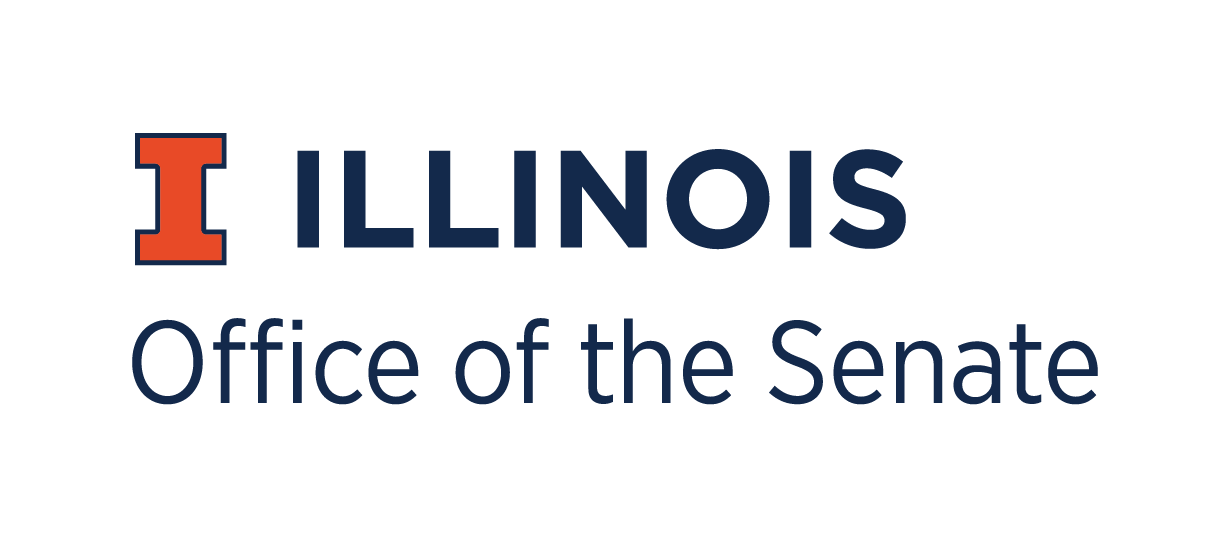AT URBANA-CHAMPAIGN
Office of the Senate
228 English Building
608 South Wright Street
Urbana, IL 61801-3613
TO: Robert Rich, Chair, Senate Council
FROM: Heidi Von Gunden, Chair, Committee on Equal Opportunity
DATE: February 2, 2000
RE: EQ.00.01, Response to the Report on the Status of Women Faculty at UIUC
The Committee on Equal Opportunity (EQ) read and discussed the report prepared by the Chancellor's Committee on the Status of Women (CCSW). Had this study not been done, EQ would have undertaken a similar investigation because part of our charge is to "develop and encourage the development of equal opportunity and affirmative action programs and guidelines directed primarily toward increasing the numbers and improving the status of blacks, women, and other disadvantaged or minority groups in the University community" (Bylaws of the Senate)
. EQ is aware that this is not the first study about the status of faculty women. There have been four faculty salary equity studies in the past: FY1994, FY1995, FY1998, and FY1999. These were confidential. EQ knew that the FY1995 study was being conducted using data provided by Carol Livingstone and that there would be funds for gender equity. However, EQ has noted that the current report is the first time that there has been a public discussion about the status of faculty women.
EQ also wants to stress that this is a report about faculty women, and although the number of women in administrative positions has increased, these women do not hold faculty positions, with the exception of the Deans and Directors. Also, although female membership on important University committees is increasing, only one of these prestigious committees is chaired by a faculty woman, and that is the Campus Library Policy Committee, the only committee that has equal representation of males and females.
Further, because of the decline of the size of the faculty at Urbana-Champaign over the past ten years, often faculty lines left vacant by retiring full professor, most of whom were male, reduced the number of faculty which then raised the percent points of the number of female faculty. Thus it may seem that there is a significant increase in the number of female faculty, when in reality it is not true. An example is one department which in 1990 had a faculty of 11 (10 men and 1 woman, a 9% female ratio) and in 1999 the same faculty was reduced to 9 (8 men and 1 woman, a 11% female ratio). Thus the percentage of women faculty seemed to increase from 9% to 11%, when actually the number of faculty positions had decreased.
EQ realizes that most of the recommendations of the current report require aggressive and assertive action by the administration. We wholeheartedly support them, especially recommendation three, that the Campus administration should take a more active role in assuring that salary equity is the reality for women on this campus. Salary equity has not been a reality for faculty women, even when previous studies have resulted in the allocation of funds for that purpose. For example, as a result of the 1995 salary study, Provost Faulkner allocated funds for gender equity raises. This was announced to EQ and CCSW. However, at a meeting of CCSW one member reported from her own experience that not all department heads or directors used the funds for gender equity. In fact, she was the only member of CCSW who was aware that she had received an equity raise, and this was because she had informed her chair that she knew the fund was available. The chair stated that he was going to use the fund for other purposes. As the Status Report recommends, there needs to be a constant and close scrutiny.
The status of faculty women has been studied at other universities and by one of our outstanding Professor Emerita, Marianne Ferber. Her field is women and economics, and her current research "Women's Uneven Progress in Academia: Problems and Solutions" is forthcoming in Women at Research Universities edited by Lilli Hornig. Ferber's study is divided into the following sections: THE CHILLY ACADEMIC CLIMATE and POSSIBLE REMEDIES, GETTING EFFECTIVE POLICIES ADOPTED AND IMPLEMENTED.
Since this article was completed recently and its publication is forthcoming, it was unknown to the committee which prepared the Status Report. However, Ferber's findings support those of the Status Report. She documents the bias, prejudices, and subtle forms of discriminations against faculty women and states that "research focusing on the situation on individual campuses is particularly useful." That is what the Status Report did and concluded that "the status of women faculty at the UIUC in 1999 is not good and that improvement is needed."
EQ is satisfied with the data that was used for this report. It is obvious that women are under represented on the faculty, especially at the full professor rank. A glance at the Student/Staff Directory confirms this. Or, observe the membership of Senate Council this year. The only woman is Geneva Belford, and she is the representative from University Senates Conference.
Note also that only two women are chairing Senate committees. Efforts to try to produce a more favorable picture of the situation by using other data, the bulk of the discussion at the Senate Council's November 8 meeting, is another way to avoid the problem of equal opportunity for women faculty. Rather than haggling over statistics, the Committee on Equal Opportunity recommends getting to work and implementing the recommendations. Let's provide women an equal opportunity on this campus. Action is needed.
We endorse the substance and conclusions of The Status of Faculty Women at the University of Illinois at Urbana-Champaign.
HVG/fm
